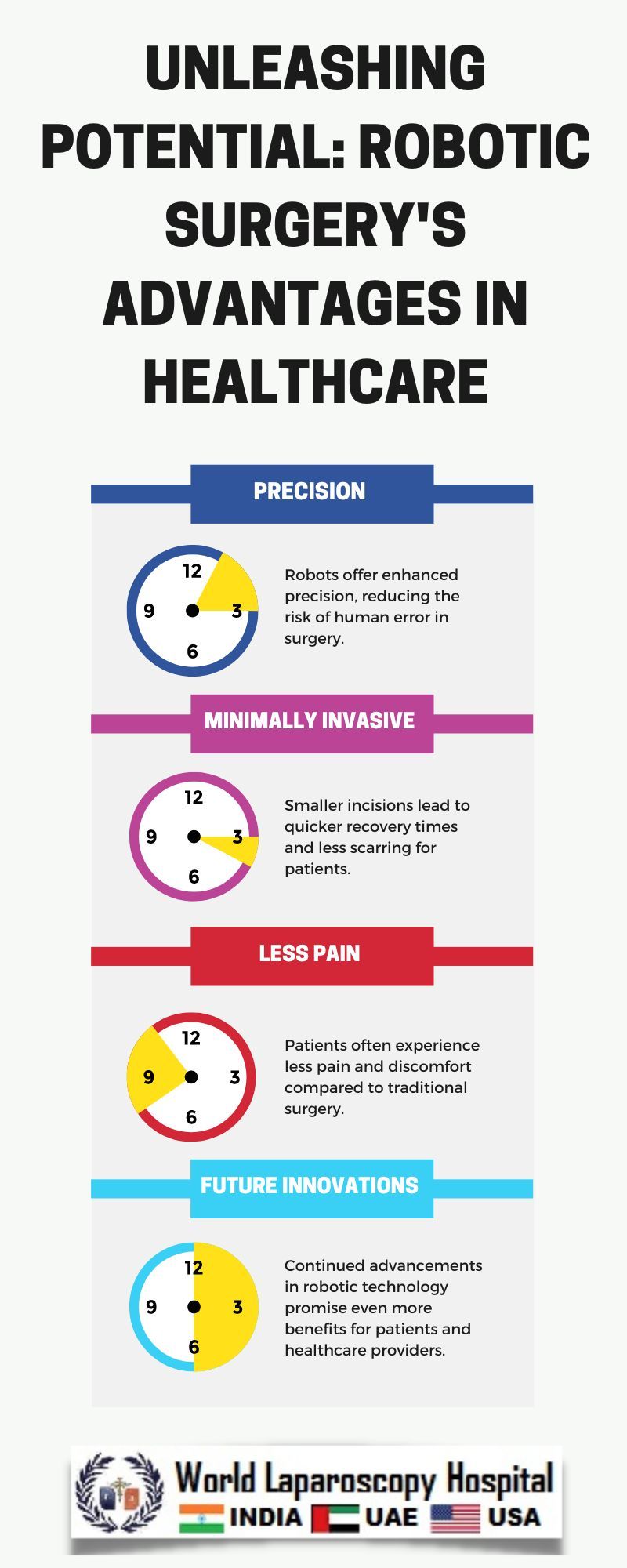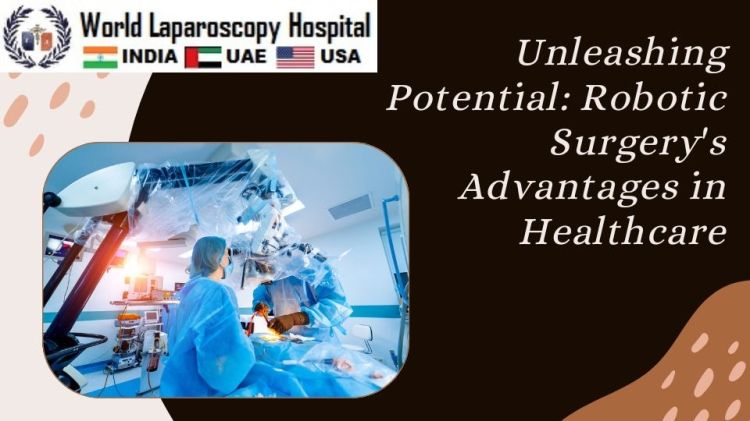Unleashing Potential: Robotic Surgery's Advantages in Healthcare
Introduction
In the realm of modern medicine, technological advancements continue to revolutionize the way surgeries are performed, leading to better patient outcomes and enhanced surgical capabilities. One such advancement that has gained significant traction in recent years is robotic surgery. Robotic surgery, also known as robot-assisted surgery, involves the use of robotic systems to assist surgeons in performing complex surgical procedures with precision and control. This article explores the advantages of robotic surgery in healthcare, highlighting its potential to transform the field of surgery.

Enhanced Precision
One of the key advantages of robotic surgery is its ability to enhance surgical precision. Robotic systems are equipped with advanced imaging technologies and specialized instruments that allow surgeons to perform procedures with unparalleled accuracy. The robotic arms can make precise, steady movements, reducing the risk of human error and ensuring that the surgery is performed with the highest level of precision possible.
Smaller Incisions
Another significant advantage of robotic surgery is the ability to perform surgeries through smaller incisions compared to traditional open surgery. Robotic systems are designed to be minimally invasive, which means that they can access the surgical site through small, keyhole incisions. This results in less trauma to the surrounding tissues, reduced pain, and faster recovery times for patients.
Reduced Blood Loss
Robotic surgery has been shown to significantly reduce blood loss during surgical procedures. The robotic arms are equipped with specialized instruments that can cauterize blood vessels with precision, minimizing the risk of excessive bleeding. This is particularly beneficial for patients undergoing complex surgeries or those with underlying health conditions that may increase the risk of bleeding.
Faster Recovery Times
Patients who undergo robotic surgery typically experience faster recovery times compared to traditional open surgery. The smaller incisions result in less trauma to the body, which means that patients experience less pain and discomfort postoperatively. Additionally, the enhanced precision of robotic surgery can lead to fewer complications, allowing patients to recover more quickly and return to their normal activities sooner.
Greater Surgical Capabilities
Robotic surgery has expanded the range of surgical procedures that can be performed with minimally invasive techniques. Surgeons can now perform complex procedures that were once considered too difficult or risky to perform using traditional methods. This includes procedures in areas such as cardiac surgery, urology, gynecology, and general surgery, among others. Robotic surgery has opened up new possibilities in the field of surgery, allowing surgeons to push the boundaries of what is possible.
Improved Ergonomics for Surgeons
Robotic surgery offers improved ergonomics for surgeons, which can lead to better outcomes for patients. The robotic console allows surgeons to sit comfortably while performing surgery, reducing fatigue and hand tremors. This can result in more precise movements and better surgical outcomes. Additionally, the robotic arms can mimic the natural movements of the human hand, allowing surgeons to perform intricate procedures with ease.
Enhanced Visualization
Robotic surgery provides surgeons with enhanced visualization of the surgical site. The robotic systems are equipped with high-definition cameras that provide a magnified, 3D view of the surgical area. This allows surgeons to see the anatomy in greater detail, making it easier to identify structures and navigate the surgical site with precision. Enhanced visualization can lead to safer surgeries and better outcomes for patients.
Remote Surgery
One of the most groundbreaking aspects of robotic surgery is the potential for remote surgery. With the advent of 5G technology, robotic surgery can be performed over long distances, allowing expert surgeons to perform procedures on patients who are located in remote or underserved areas. This has the potential to greatly expand access to surgical care and improve outcomes for patients around the world.
Conclusion
Robotic surgery represents a significant advancement in the field of surgery, offering numerous advantages over traditional open surgery. From enhanced precision and smaller incisions to reduced blood loss and faster recovery times, robotic surgery has the potential to transform the way surgeries are performed and improve outcomes for patients. As technology continues to evolve, robotic surgery is likely to play an increasingly important role in healthcare, unleashing its full potential to revolutionize the field of surgery.
